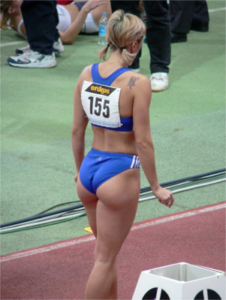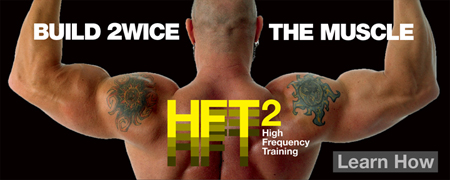 It doesn’t matter if you’re a man or a woman, everyone wants impressive glute development. But many people don’t know how to intelligently train the glutes to achieve the best look and performance. So I’m here to tell you how to do it as quickly as possible.
It doesn’t matter if you’re a man or a woman, everyone wants impressive glute development. But many people don’t know how to intelligently train the glutes to achieve the best look and performance. So I’m here to tell you how to do it as quickly as possible.
First, let’s cover the primary functions of your largest glute muscle: the gluteus maximus. At the hip it provides the torque for extension, abduction and external rotation. However, most lifters put too much emphasis on the hip extension action during their workouts and this can lead to poor glute development and performance.
Let me explain.
When you perform a squat, lunge or step-up I’m sure you’ve noticed that your knees will buckle inward as you fatigue. Heck, it might even happen before you fatigue. This inward buckling is known as knee valgus and it can lead to a host of problems. Indeed, research demonstrates that valgus can be linked with: lateral hip pain, IT band stress, knee pain, ACL/MCL strain, and even excessive foot pronation (Powers CM, J Orthop Sports Phys Ther, 2010).
What does this have to do with the glutes? Everything.
When you drop into a forward lunge or squat, the knee valgus is caused by a combination of three movements at the hip: flexion, adduction and internal rotation. Therefore, to avoid knee valgus you’ll need to strengthen the muscle that performs the opposite functions at the hip: extension, abduction and external rotation.
Is there a tri-planar muscle in the body that can do all three? Yep, the gluteus maximus. But it doesn’t work alone since the gluteus medius and minimus are also contributing to the torque that’s necessary to keep your knees out of valgus.
Maybe you suffer from knee pain? Or maybe you’re an athlete that needs the glute power necessary for a lightning fast sprint? Or maybe you just want your glutes to finally start growing?
The good news is the solution for all three of those goals is the same. Just place one or two Perform Better mini-bands around your lower thighs and perform variations of lower body exercises.
The following video shows you the iso-squeeze technique, the best place to start in your path to gluteal prowess. This simple exercise targets the glute fibers that are most neglected: the fibers that perform hip abduction and external rotation.
Glutes Iso-Squeeze
Sets: 5
Hold: 10 seconds
Rest: 20 seconds between sets
After finishing 5 sets of the glutes iso-squeeze move directly to the lateral step with the band. You might need to use a band with less resistance for this exercise.
Lateral Step
Sets: 3
Reps: 20 (10 steps in each direction)
Rest: 30 seconds between sets
Perform the glutes iso-squeeze and lateral step at the end of your workout, every other day. Keep in mind, the above exercises are intended to supplement, not replace, your lower body training. You should still perform exercises such as the hip thrust, deadlift, step-up and sprints earlier in your training to achieve complete development.
Once you’ve performed the glutes iso-squeeze and lateral step for a few weeks it’s time to move to more dynamic movements such as the monster walk, clam, goblet squat and jumps with the band around your knees.
The glute aficionado, Bret Contreras, and I frequently discuss how amazed we are when we put clients on a High Frequency Training (HFT) plan for the glutes. They will grow fast if you know how to train them, and if you train them frequently enough.
The complete program to develop the glutes, and any other major muscle group, can be found in my HFT2 training system at this link.

Stay Focused,
CW

